Are you looking to improve your hand-eye coordination when it comes to painting miniatures? The fastest way to make tangible leaps in your ability and model painting results is to hone your body’s ability to control and use the brush as an extension of your own hand. Sure, I could suggest “paint more miniatures”, but there’s a bit more you can do, too.
In this article, I’ll go over three tips I learned from my work in various real (and hobby jobs) that required fine motor skills and excellent hand-eye coordination.
These tips will not only benefit your miniature painting, but could be useful for other hobbies and pursuits that require delicate manual dexterity.
Paint Sets for Painting Small Details on Miniatures and Models! 🏆🎨
- Reaper Miniatures Learn to Paint Kit Core Skills (Best Value)
- The Army Painter Mega Selection Paint Set (Comprehensive Bundle)
- Vallejo Basic Colors Paint Set (Basic Core Paints)
What is Hand-Eye Coordination and Why is it Important When Painting Miniatures?
Eye coordination is the ability to coordinate the movement of your hands with what you’re seeing. This is important when painting miniatures because it allows you to have more control over the paintbrush and the paint itself, resulting in a better overall finish.
From a neuroscience perspective, hand-eye coordination is the result of the brain’s ability to process visual information and convert it into motor commands. In other words, it’s the communication between the eyes and the hands that allows us to perform tasks such as painting.
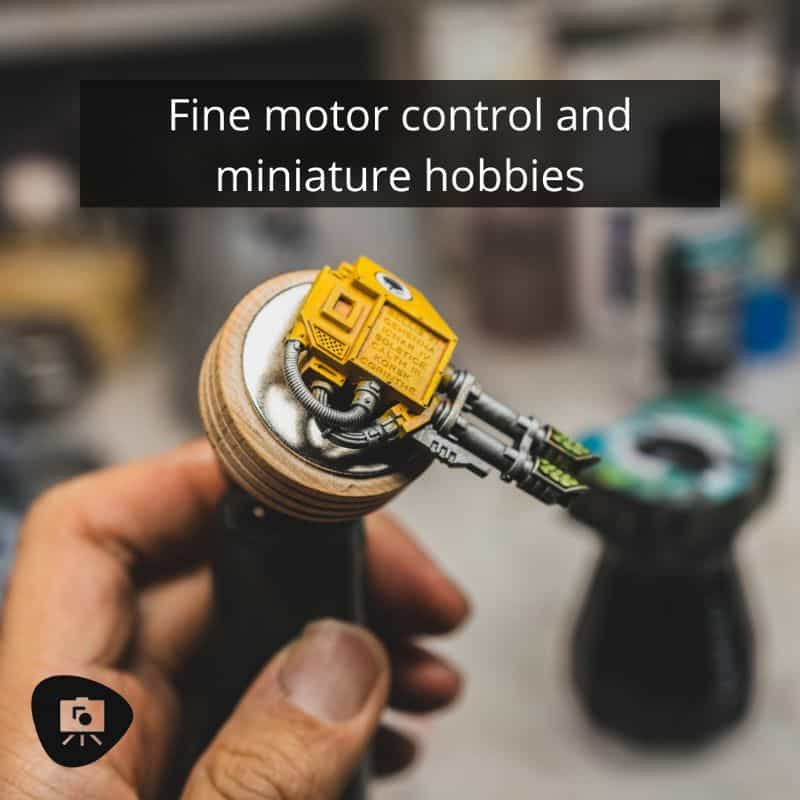
Motor control is another important factor in hand-eye coordination. This refers to the ability to control the muscles in our hands, wrists, and arms in order to complete a task. Your entire nervous system is involved in motor control, from the brain to the spinal cord to the nerves in your muscles (more about this below…and those tips to make it all happen just a bit more efficiently).
Say What? Caffeine Does Not Significantly Affect Hand-Eye Coordination
Fun fact*: For those of you who enjoy coffee or a strong caffeinated beverage while your work on your miniature hobbies, don’t worry, you’re not doing any damage to your hand-eye coordination. Check out my new (super expensive) coffee expresso machine.
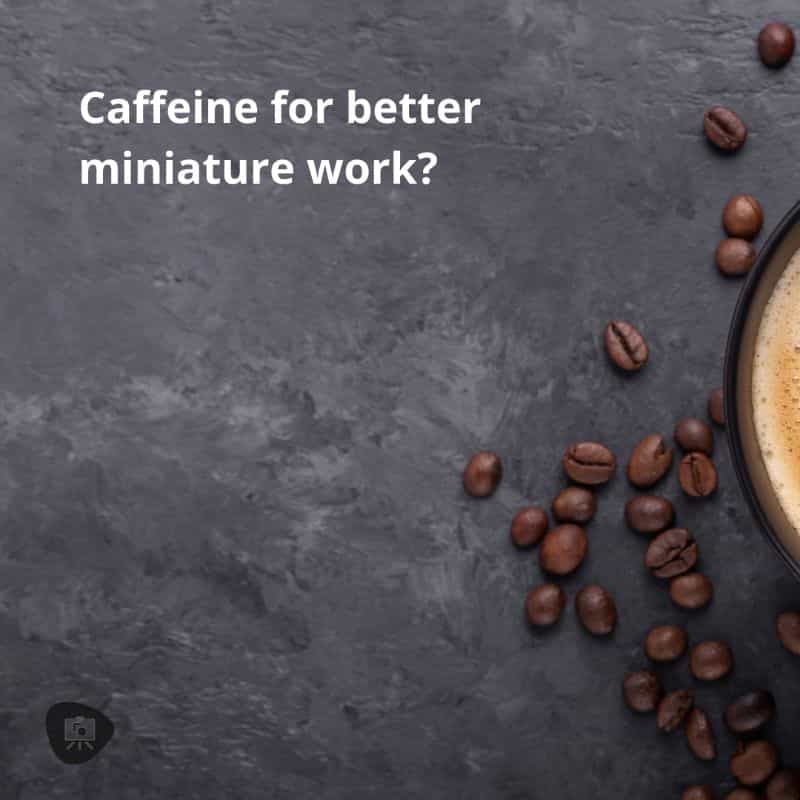
A study published in 2002 found that there was no significant difference in the performance of tasks requiring low intensity performance tasks, e.g., including hand-eye coordination, between those who had consumed caffeine and those who had not. In fact, there was a notable increase in performance in hand-eye coordination where spatial awareness was involved, which could helpful when trying to paint those hard-to-reach places.
…A Bit More Neuro (for the Water Cooler)
Neuroplasticity is the ability of the brain to change its structure and function in response to experience. This includes the ability to learn new things, form new memories, and even change how we think and feel.
How do you improve neuroplasticity to get better at doing things? Repetition. Practice. Doing a thing over and over is probably the simplest way to get those connections you want made, well, made. Of course, there are other things you can do, like staying healthy, eating right, and all that.
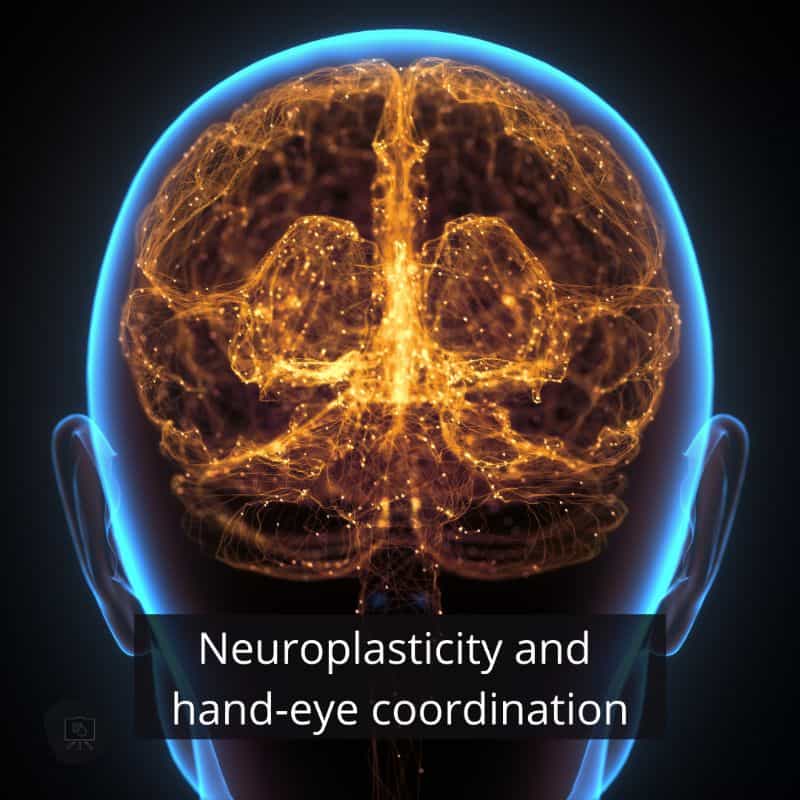
And, then there’s the idea that your nervous system is going to do whatever it is programmed to do, and you can only push it outside those boundaries before it plateaus. In other words, there are limits.
The good news is that the brain is constantly changing in response to our experiences.
This means that anything we do or think about will internalize, hard-wire, as we experience or perceive it. This includes our experiences with painting miniatures. When we practice painting, we are essentially rewiring our brains to be better at it.
There are three primary centers of the brain that control our the dexterity and fine motor ability that we exert through our hands: the cerebellum, the cortex, and the spinal cord. While these are not the only areas of our nervous system that govern fine-motor control, they are the most important for our purposes here.
Here’s a quick overview of the centers of your nervous system involved in controlling fine motor skill:
- The cerebellum is responsible for coordinating our movements, and it is especially important for tasks that require precise timing or sequencing of movements.
- The cortex is responsible for processing information from our senses (sight, touch, etc.) and planning movement. It is also important for attention and focus.
- The spinal cord is responsible for carrying messages from the brain to the muscles, telling them when to contract or relax.
All of these areas of the brain work together to produce the fine motor control that we need for painting miniatures. You engage all of these areas of your nervous system (among many others) every time you pick up a brush and start painting (source).
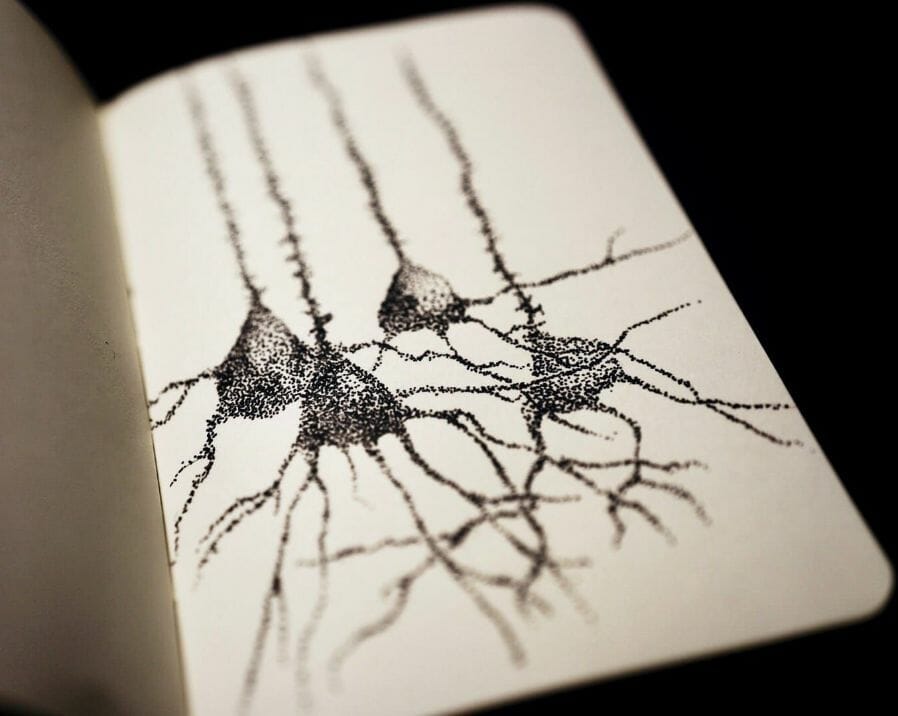
With practice, the connections between these areas of the brain and body become stronger and more efficient, e.g., “muscle memory”. This is how we get better at painting miniatures or any skilled movement. We are essentially rewiring our brains to be better at it.
Alright, enough biology. 🦾
Here are some tips for improving your manual dexterity for painting miniatures. Whether you’re a beginner or a seasoned pro, these are things that I’ve done that have gradually helped me improve my results.
Tip #1: Practice Painting Smaller Objects
One way to improve your hand-eye coordination when painting miniatures is to practice painting smaller objects. This will help you get a feel for the brushes and paints, and how to move them around on the surface of the object.
Start by finding some small objects around your house that you can use for practice. Buttons, coins, and even pieces of jewelry are all good options.

I personally like using small rocks and stones I find out in the yard or during walks at my local park. A flat stone with cracks, or a few uneven spots, make for a good challenge when first starting out.
Once you’ve gathered your materials, set up a workstation with good lighting and a comfortable chair. You’ll want to be able to sit upright with your arms and shoulders relaxed. If you’re right-handed, have the object you’re going to be painting in front of you on the left side of the table, and vice versa for left-handers.
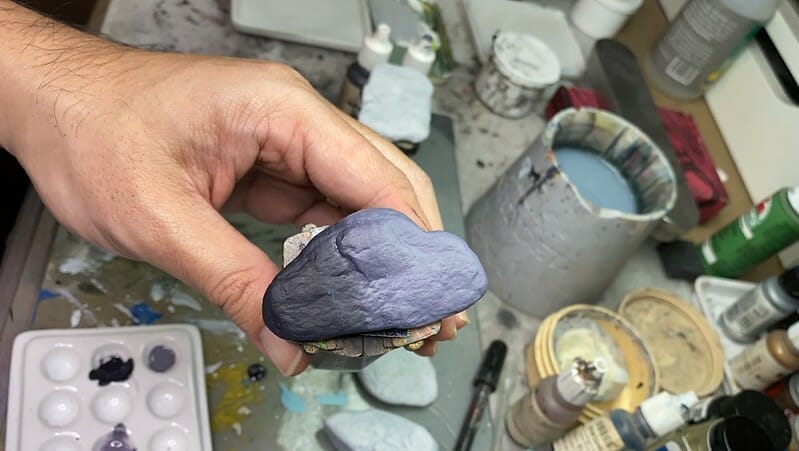
Although the main goal is to eventually paint miniatures, e.g., Warhammer 40k models, whatever your pleasure, the idea of painting different small objects is to get a feel for how the paintbrush moves and reacts to different surfaces you’re working on.
Paint anything you want. Find a reference photo, for example, and try to “paint a sketch” of the entire image on the small object. Or, just go freestyle and paint whatever comes to mind. The main thing is to have fun and be creative.


The idea is to play with your tools and apply paint colors within a small, confined space. For myself, I try to paint my rocks with fine evenly-thick lines, blending discrete surfaces, and making similar-sized dots and regular patterns.
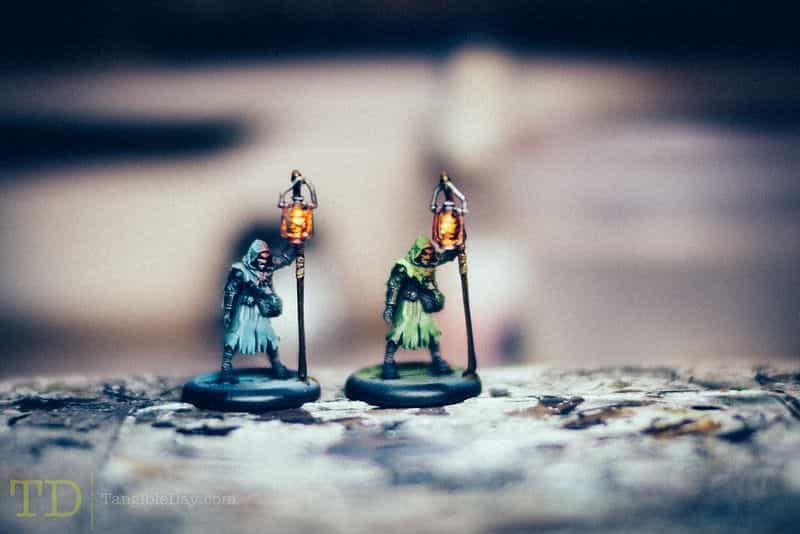
You’ll also want to experiment with different strokes and brush sizes. A small, fine-tipped brush is going to give you more control than a large one. And horizontal strokes are going to be much easier than vertical ones.
Work on making smooth, consistent strokes with each pass of the brush. The goal here with brush-control is to have a light touch so you don’t end up with paint splotches all over the place. Remember to take your time and relax your hand as much as possible.

The overall idea is to maintain the challenge by keeping control over your effort throughout the entire process. Do this as long as you can in a single painting session, up to 2 hours straight. It might help to try and paint to music, or even better, paint with a friend and talk while you work.
Follow-up tip: Use a smaller brush, but not too small!
A smaller brush will give you more control, but if it’s too small then it can be difficult to maneuver and you’ll likely struggle later when you move to larger models or miniatures.
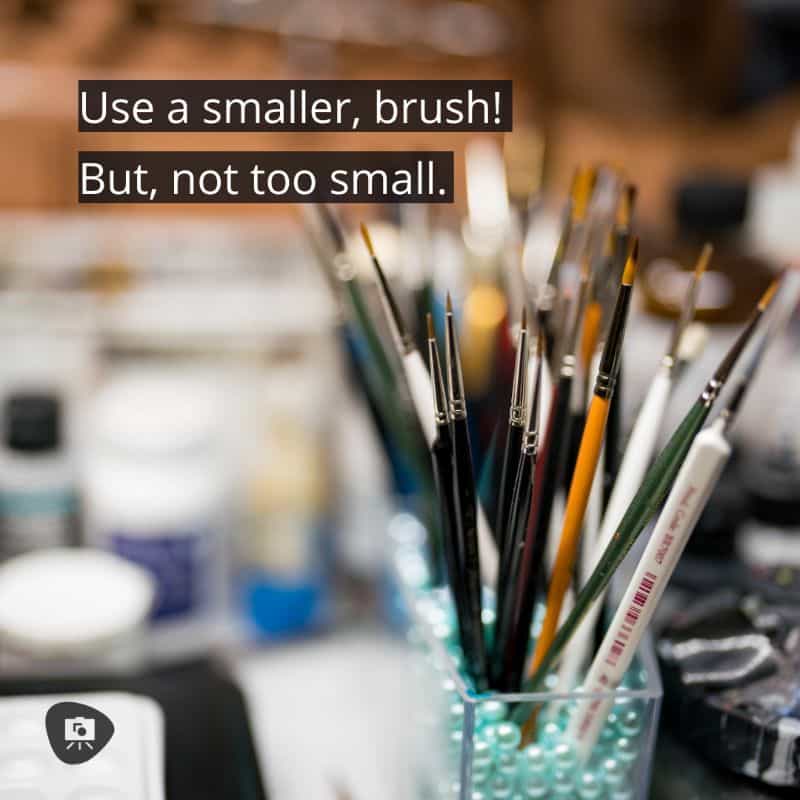
I recommend using a size 1 or 2 brush for most of your miniature painting work. Though, remember that your ability to paint details isn’t necessarily from your brush type, size, etc. How well you can paint small surfaces depends on your experience, and how well your mind and body work together to control the brush.
The other thing to keep in mind is that the type of paint you’re using will also affect the brush size you need. For example, if you’re using higher viscosity acrylic paints, e.g., Scale75, then you’ll want a thicker brush with stiffer bristles, so the brush don’t splay out too much when pressure is applied. Certainly, you can thin your paints down with water if you want, but that’s another topic (see this article about acrylic paint thinning for miniature painting).
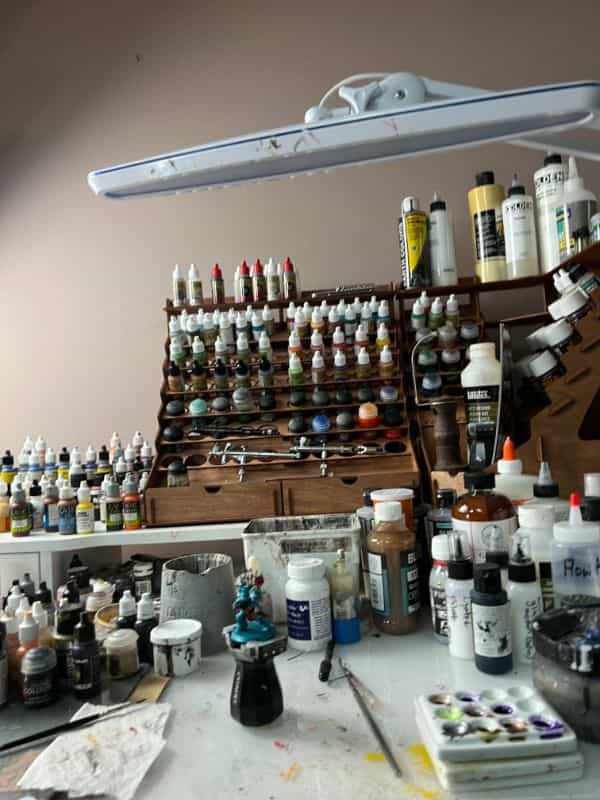
Tip #2: Use a Good Light Source
Another helpful tip for painting miniatures is to use a high quality light source. This will help you see the details of what you’re painting more clearly, and it can also help reduce eye strain.
Alright, you’re asking what does good lighting have to do with improving my motor dexterity? Well, it comes down to comfort. The more comfortable you are doing something for longer periods of time, continuously, the better your chance of making this kind of repetitive practice a habit.
“Specifically, the frequency and consistency with which the desired behavior is performed, the inherently rewarding nature of the behavior, a comfortable environment…have been shown to facilitate the process of habit formation.”
Weiden and colleagues
So, if you want to make it a habit to practice your miniature painting skills, then set up an environment that is as comfortable and inviting as possible. This way you can spend more time focusing on the task at hand rather than being distracted by your surroundings (or tired, strained eyes).
Now, I’m not saying you need to go out and buy an expensive Luminos lamp (although it is my dream lamp), but you should at least make sure you have a good light source that illuminates your work area well.

In another article, I do recommend using an affordable quality LED desk lamp for hobby work, like this one from Neatfi (see full review). You can position it so that the lamp is shining directly on the working surface you’re painting. I’ll note quickly that this particular model doesn’t have adjustable color temperature settings, it provides good contrast and color reproduction for seeing detail, without being too harsh on the eyes.
If you want to take things a step further, you can also invest in a magnifying lamp. This will allow you to see even the smallest details more clearly. But, for those just starting out, I suggest first learning how to paint without magnification. This is especially true when you’re trying to improve your mini painting skills, including your dexterity and fine motor ability.
There’s something to be said about “painting unaided” and learning how to trust your eyes and hands to do the work, without being able to see every little detail. This can help you develop a good sense of touch and overall brush control.
And, again, good lights mean comfort, which in turns leads to better motivation for continuous practice and more time invested your hobby activity.
Tip #3: Take Your Time
One of the most important tips I can give you for painting miniatures is to take your time and relax. This may sound counterintuitive, particularly those of you who just want to finish things, but it’s actually really important.
Ever hear the phrase “slow is smooth and smooth is fast“? It’s true! The more you practice painting slowly and with control, the faster you’ll be able to paint while still maintaining that high level of quality.

So, how do you practice painting slowly?
Well, it’s actually pretty simple. You just need to set a timer for yourself and see how long you can paint without rushing. For example, you could set a goal of painting for 15 minutes without making any mistakes.
(Example: Set a goal, like wet blending a small surface, and get the transition between two colors as smooth as possible).
Start by setting the timer for 5 minutes and see how well you do. When you make a mistake, stop the timer, take a breath, and start again.
The key is to focus on the process and not the end result. If you can do that, then you’ll find that your painting speed will gradually increase over time.
Practice is an investment of time
For building up hand-eye coordination, those fine movements in your hands, fingers, wrists, and even your entire upper body (as this all comes into play), you need to practice. The best way to get better at anything is through deliberate practice, and that takes time.
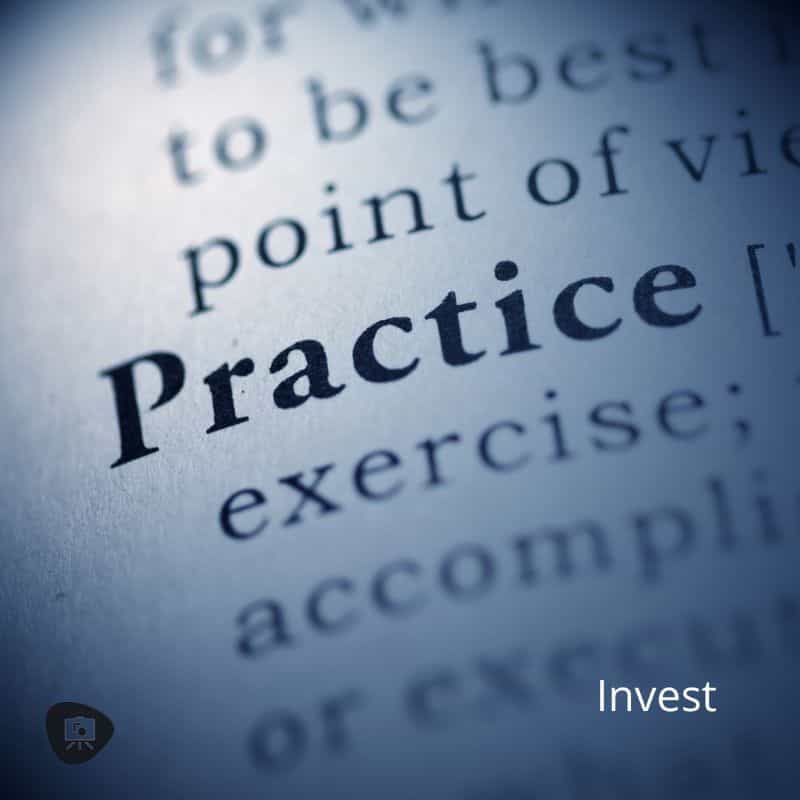
You might find it helpful to break down the painting process into smaller steps and focus on one thing at a time. For example, you could focus on just paint mixing for a few sessions (e.g., try to get your custom mixes consistent from one batch to another) or working on laying down a smooth base coat.
By taking things slow and breaking down the process into smaller steps, you’ll be able to focus more on the task at hand and less on the overall project. This will help you develop those finer skills needed for painting miniatures.
Encouragement for Painting Miniatures and Wargaming Models
There’s no magic bullet “aka short cut” for improving your hand-eye coordination, unfortunately. That neuroplasticity happens with repetition and focus occurs in everyone. It just takes time and practice to develop those skills.
But, with invested, purposeful practice, you can develop the fine agility in your fingers, hands, body and mind needed for painting miniatures (or anything else for that matter). Just remember to take things slow, focus on the process, and don’t get discouraged if things don’t improve as quickly as you’d like.
And, remember: All of these tips and principles work for any skilled activity. Whether you’re trying to learn an instrument, a dance number, or simply want to improve your reflexes for your favorite video game, e.g., those first person shooter (FPS) thumb-y actions, this all works!
Are You Looking for a Good Paint Set to Jump Start (or Restart) Your Miniature Painting Journey?
Check out the Wargames Delivered Mega Selection paint set or these other recommended starter hobby paint sets.
- Reaper Miniatures Learn to Paint Kit Core Skills (Best Value)
- The Army Painter Mega Selection Paint Set (Comprehensive Bundle)
- Vallejo Basic Colors Paint Set (Basic Core Paints)
These paint sets comprise an amazing bundle of must-have hobby supplies and paints for new (or experienced) miniature painters. They will take the guesswork out of what you need and are an excellent way to get started (or restarted) in the hobby.
Conclusion
What are you waiting for? Get out there and start painting those miniatures! And, don’t forget to practice. The more you do it, the better you’ll get. Try implementing these tips and, as always, have fun with it!
(And, behind those eyes of yours, your brain will be re-wiring itself, just as it has this entire time reading this article!)
Okay, so there we are; I hope you found this article helpful. If you have any questions or comments, please feel free to leave them below.
Happy (mini) painting!



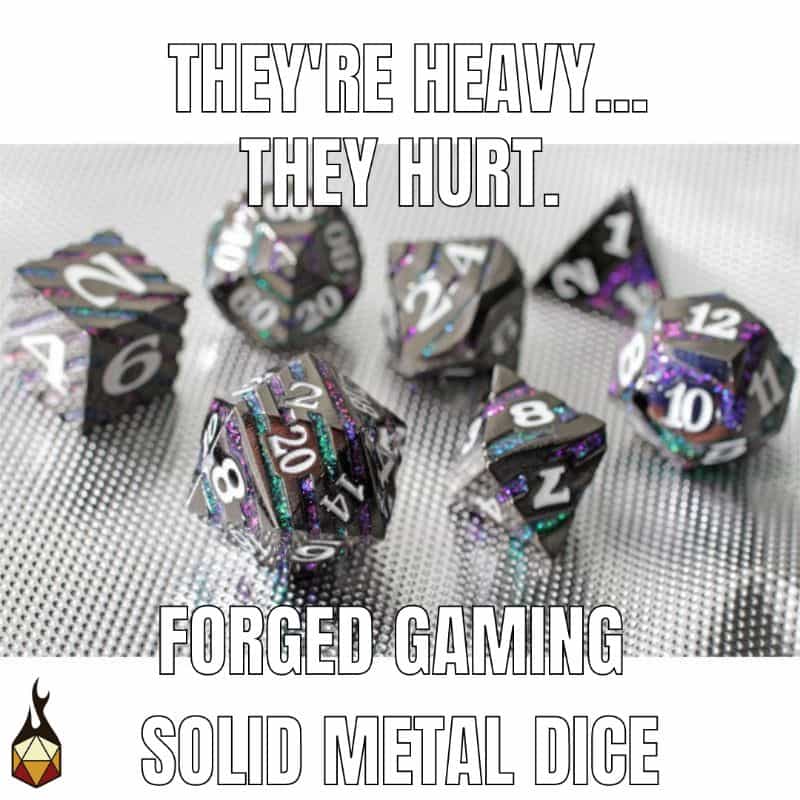

Tangible Day on YouTube (Miniatures and More!)

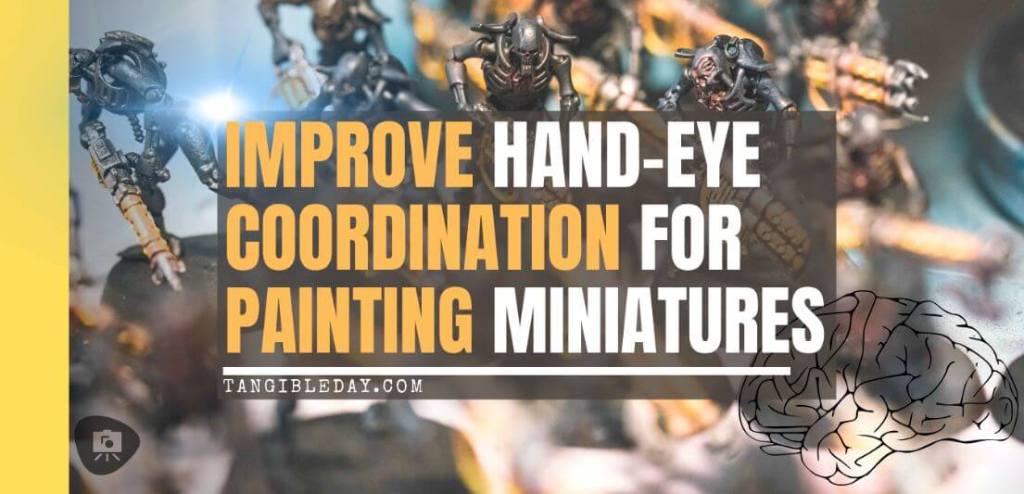
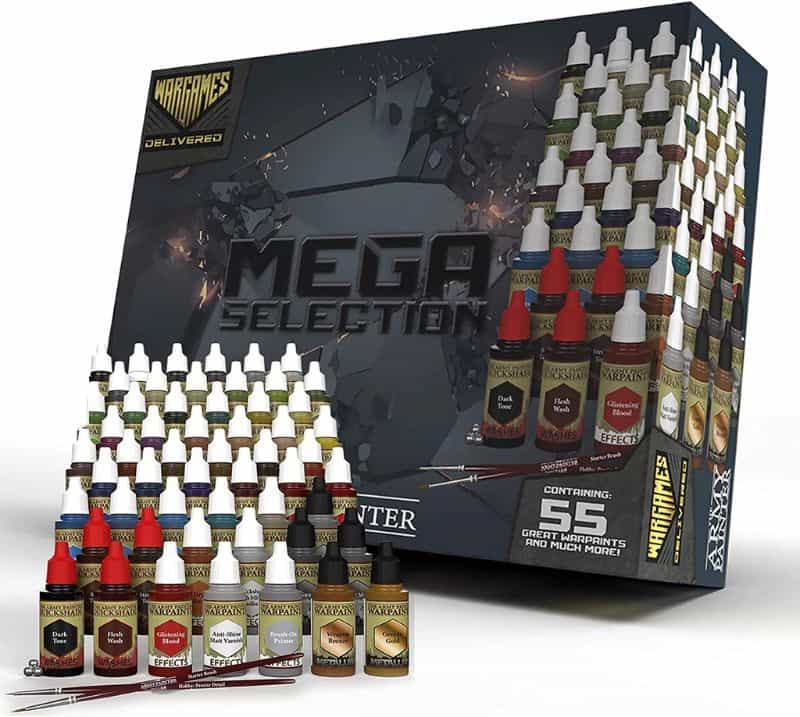

Pingback: 3 Tips to Improve Your Hand-Eye Coordination for Painting Miniatures - Toy Newz